Build Rome
-
WIP
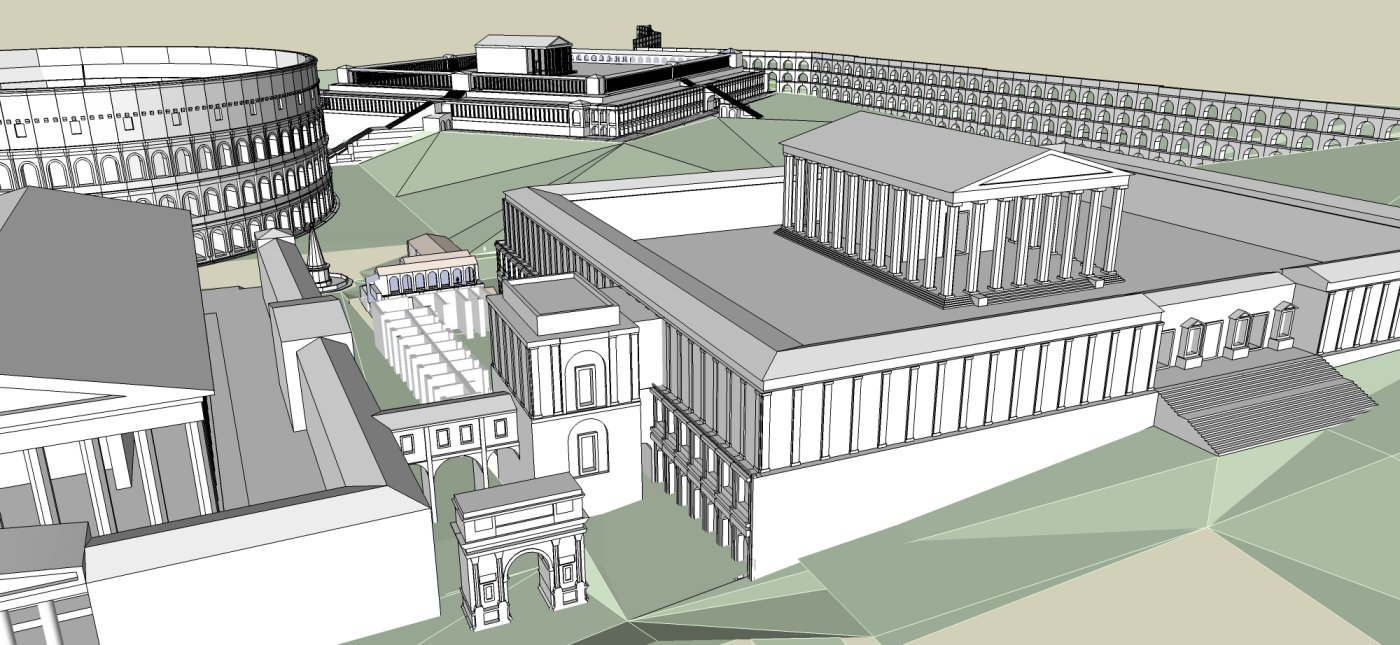
-
@hepf said:
Yes, that's tricky. Of course I will include it in the Domus Transitoria, but what is it? It's too luxurious to be a service criptoporticus. And the explanation that some domus had a summer underground residential section doesn't convince me. So I was trying to imagine at least une quarter open on a garden, the slope allows for that towards the forum.
You would place the garden at the end of one of the four "arms" then?
It is striking that this same kind of hall is repeated in the Oppio-house and later in the Domus Augustana, at the lower level, and the Domus Flavia, one of the entrances to the peristyle opposite the temple of Apollo.@hepf said:
And Svetonius says the Transitoria was at least intended to link up with the Ortii Maecenati, so it should extend that way over the Velia and towards the Oppio hill. And what part of the Tiberiana was standing at the time, and how was it connected to the rest? Lots of guesswork ...

Just as for the Domus Aurea, I don't think the different parts of the Domus Transitoria were actually connected to one another.
Besides the cryptoportici there's no real link between the Domus Tiberiana, the House of Augustus and the Domus Flavia/Augustana either. My interpretation (and the most widespread, I think) of Suetonius is that the Palatine and the gardens of Maecenas were linked through property (gardens and the likes), not as one actual building. I guess the Palatine complex remained the private home of Nero, while the Oppio complex was more a show off for guests. There is no real necessity to have a "private link" between both buildings.Seeing your work on that ramp, I am automatically thinking of the one between the Domus Tiberiana and the Via Nova. In the older version from Caligula you could even imagine the same little bridge between it and the temple of Castor&Pollux

While I'm at it, what do you think about the place of the Temple of Augustus (and later to all divine emperors)?
I know the temple next to the Meta Sudans is often regarded as it, but I can't imagine such a relatively small building to be a temple for the emperor. When Suetonius writes that the shrine for Augustus was replaced by a temple, he doesn't actually say that the temple stood on the same spot. He could have ment that the temple took over the religious function of the shrine.
But where it actually was... The most intriguing places I read people placing it are on top of the destroyed house of Augustus (the large foundations could serve that goal and the spot seems logical) and another one is on the "Domus Tiberiana". That platform reflects perfectly the platforms of the temples of Claudius and Heliogabalus (three platforms, three temples, three emperors), while no remains of a palace have been found under the Farnese gardens (ok, they haven't had a chance to dig yet, but I'm curious about what they would find). -
Well, Tom, as we say in Italy, you are putting too much meat on the fire. But since I am trying to unravel those points, I'll try to answer.
First, I think that overpass connections were pretty usual, but since they don't leave any foundation footprint they usually are overlooked. We have lots of evidence for cryptoporticus, for the obvious reasons, and none for overpasses. Which doesn't mean they didn't exist.
The image I enclose is what I am trying to reconstruct about the "day before the great fire". The best defined buildings are those for which we have some evidence. The temple at the side of the Meta fountain has been identified with the Curiae Veteres, and the house that was the birthplace of Augustus was probably in the area of the buildings at its back, and it is probable that in the rebuilding by Claudius before the fire of 64 aD it was rededicated to Augustus. The small Flavian temple is just a keepsake, and doesn't mean that there wasn't another more important temple to Augustus somewhere else.
I think that the house of the Domitii was the hub of the Domus Transitoria in this area, with no connection with the Domus Tiberiana (or what existed before the fire) that was probably the official residence of the emperor.
I am not satisfied with the reconstruction of Carandini on the the house of the Domitii, I am just pondering about it, but it must phisically be extended in the directions indicated by the arrows, and one section, that I painted green in the image, could have been an open garden, giving some light to the system. Just ideas ...

-
Ah ok, I didn't know the small temple was flavian. I remember reading an article some years ago about archaeologists finding Augustus' birth house. The article included reconstruction drawings of the temple and the augustean meta sudans. I just assumed that this was the temple for Augustus that replaced the shrine because it was mentioned in the text.
This is exactly the kind of thing I'm trying to learn more about
For the overpass connections, I'm not convinced. Of course, since most buildings in Rome have been broken down to pavement level or completely transformed into a new building, it is impossible to have proof of such structures. But I don't recall seeing them in better preserved cities like Ephesus, Pompeii, Herculaneum or Tivoli either. I don't say there were none, surely there were, but I don't think they were that common. But that's my idea...
Can't imagine why they would connect the temples of Heliogabalus and Venus&Rome, but it does look nice. -
Wow, wow and wow!
Hi Marco, it was very interesting for me to read this topic and to look an your amazing and great model, really weel done, super!

Maybe you kow that L.VII.C and I also like to reconstruct the roman buildings (http://forums.sketchucation.com/viewtopic.php?f=81&t=23042), so maybe one day the whole Rome will arise in a one great model and we'll have the ability to walk anlg the streets, forums, palaces and baths
-
First I want to say nice project. I'm not completely sure if this problem got resolved as I didn't read all 130 posts or what ever but I do have a possible solution to your interactive element. Note I said possible as it would take work but would solve it quite well. I would suggest using UDK. This would provide many advantages. You would instantly have the ability to walk through the streets of Rome. Now I'll start with the ground up, the terrain seems to very important to you. UDK has one of the most powerful terrain sculpting systems out there and the best part is it can use height maps. You could literally get a picture of the topology of the area you want, throw it into Photoshop (or anything really) and then paint white onto the high places and then paint black on the low places. Save it as a .TGA import it into UDK's terrain editor and there you go. Next would be your ability to run detailed maps at a high frame rate. Using level streaming you could calculate portions of Rome rather then the whole thing. It works just like music streaming actually. You could also use occlusion culling to further optimize your speed. On top of that you've got one of if not the top lighting system in the world at your finger tips. You also have a UI builder that works quite well. Now I really don't what this to sound to much like a commercial but UDK is free. If that is the direction you chose to go I would be glad to help with the UDK portion once I get my new computer. I hope I didn't blow you away with detail or anything but I could see really good things come out with this using UDK. I hope this helps!
-
UDK or Unity 3D or OpenSpace3D

-
I looked up OpenSpace3D and that is a really nice package. However I didn't see any terrain editing systems in place for OpenSpace. Unity is a solid engine with great terrain tools but its aimed at mobile systems. You would have an easy time of getting up on the web (if you wanted it to be a browser based application) but Unity might not be able to handle the large amount of different models. Lastly I found out that ScaleFormGFX ships with UDK. If you have access to FlashPro or something like it you have your UI problem solved right then and there.
-
Well, I've been off for a while (Ecuador and Haiti as a matter of fact) but now I am back at it. I had posted a thanks reply to Aaronfeld, Danik and Pilou, but it seems to have gone lost in the mail.
Anyway, I am trying to fill up the area on the Velia hill in Nero's project. It seems that the small temple of the goddess Tellus was preserved, and I suppose that there were buildings joining the Termae of Titus to the rest, with something important on the highest point of the hill. The problem is there are three orientations: the Atrium/lake; the Oppio wing; and a third one, in the area of interest, given by some large substructures that create an artificial hill that joins the Velia and the Oppio (filling up what was probably the valley of the Carinae).
The chamfer in the Termae of Titus seems to indicate that on that line the orientation changed to give place to the lake orientation, with a street in betweeen (the present street of the Termae of Titus), but the substructures tell a different story ... I tried a compromise ...
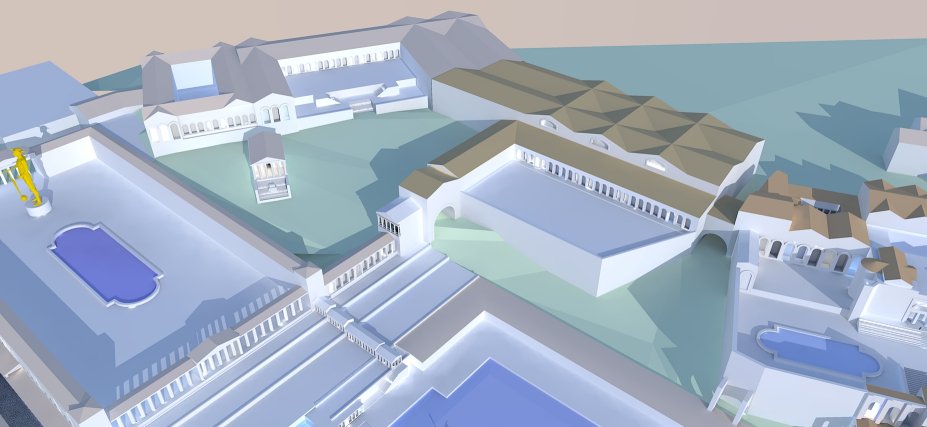
-
And this is the Claudianum in the flavian version, with the temple of Claudius and the grand staircase that replaces the diagonal one of Nero's project (perpendicular to the lake).
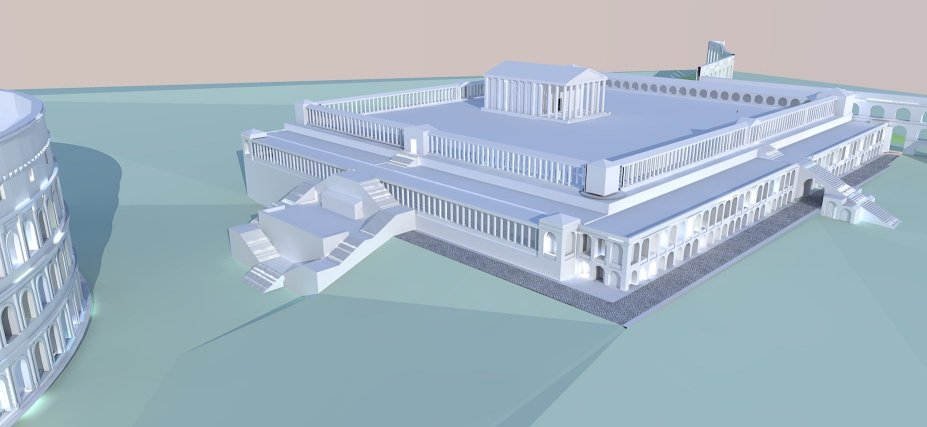
-
hepf, I suppose that you don't know about my project (now stopped, I want to play with it a bit more), but I think this would be interesting for you:
It's a game engine, free for non commercial purposes and a bit hard to start playing with it, but you have the possibility to take a walk in Nero's Palace, if you are interested and want to learn it.
-
Muy divertido. Contra quien hay que tirar? Arqueologos o huaqueros?
-
@hepf said:
Muy divertido. Contra quien hay que tirar? Arqueologos o huaqueros?
Contra las estatuas, hay que hacerlas añicos para dar trabajo a los restauradores, que con la crisis están todos sin empleo


-
Ah! Es por eso que las ruinas estàn tan arruinadas....
-
@hepf said:
Ah! Es por eso que las ruinas estàn tan arruinadas....
Efectivamente, las ruinas surgen de la necesidad de trabajo de los restauradores ante las crisis económicas asociadas a las caídas de civilizaciones


Better stop our spanish conversation. It's a pity that english speakers can't follow such incredible historical discovery about generation of ruins.

-
@hepf said:
Never mind, Fluffy. It's messsy anyway.
This is a try at the tower/ramp. It looks quite odd, so near to the arc of Titus, but this is the plan of the excavations, it really looks as an annex to the temple base. Any suggestion welcome.
I'll have to work at the termae at the back of the tower next ...If I am not wrong... has the house next to the ramp been identified now as the house where emperor Augusto was worn? This new says so: http://roma.repubblica.it/cronaca/2011/10/26/foto/la_domus_di_augusto-23883515/1/
Gallery here: http://roma.repubblica.it/cronaca/2011/10/26/foto/la_domus_di_augusto-23883515/1/
I have read it with Google Translate. You know, I enjoy reading news about this, but I am engineer

-
You know, reporters are always looking for something sensational, and my wife gave them that. But it is quite likely true, what she found is the remains of a large house of the right age, with some luxury details, mosaics and wall paintings, just behind the temple that has been identified as the Curiae Veteres, and the sources say that Augustus birthplace was near the Curiae Veteres. It all fits, and probably the small flavian temple built after Nero's death was dedicated to the memory of Augustus, and was also possibly used as an archive for his personal documents, something like the US presidential museums of nowadays. All this was known for a while, but newspapers must gloss it over to attract attention.
-
Controlled sensationalism if there is true in the new, is good, sometimes. "Another roman house" is very different from "the place where Augustus was born" from a touristic point of view. Personally and thanks to that new, I have been reading and learning about the temple of Apollo, and I now understand better your hypothesis of the ramp for the processions. By the way, whenever I read about processions I always remember the spanish catholic ones...
Thanks you a lot. I always enjoy what you bring us here, 3D photos or words.
-
Island of Bequia, Caribbean, several years ago
 ...
...
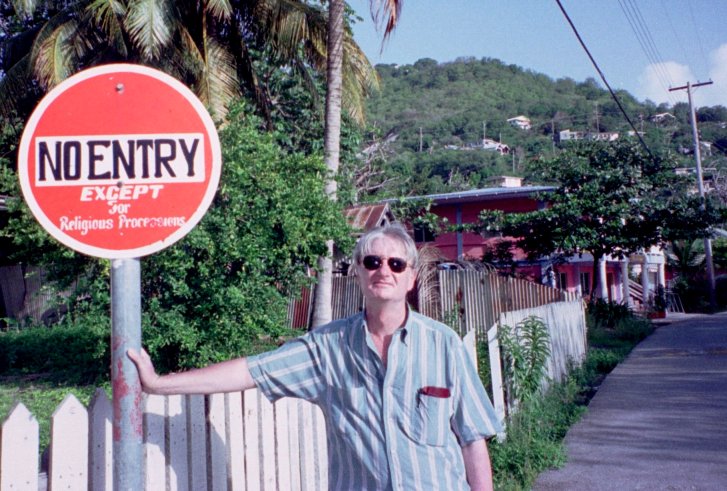
-
At any rate, the house that's supposed to be Augustu's birthplace looks like this in my model. At the back of the Curiae Veteres, and with shops along the front on the Sacra Via.
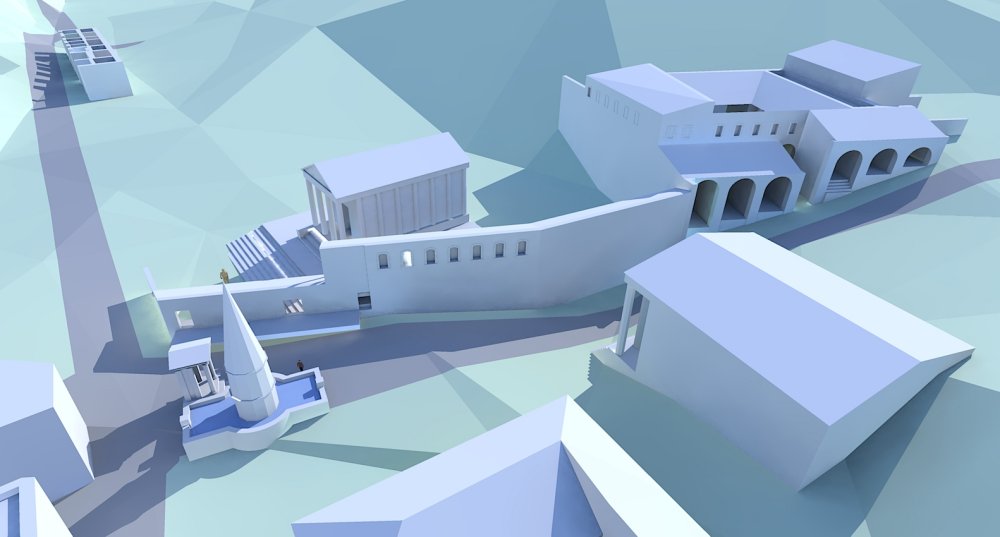
Advertisement







